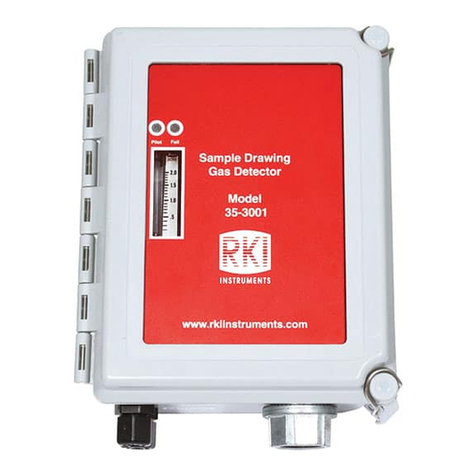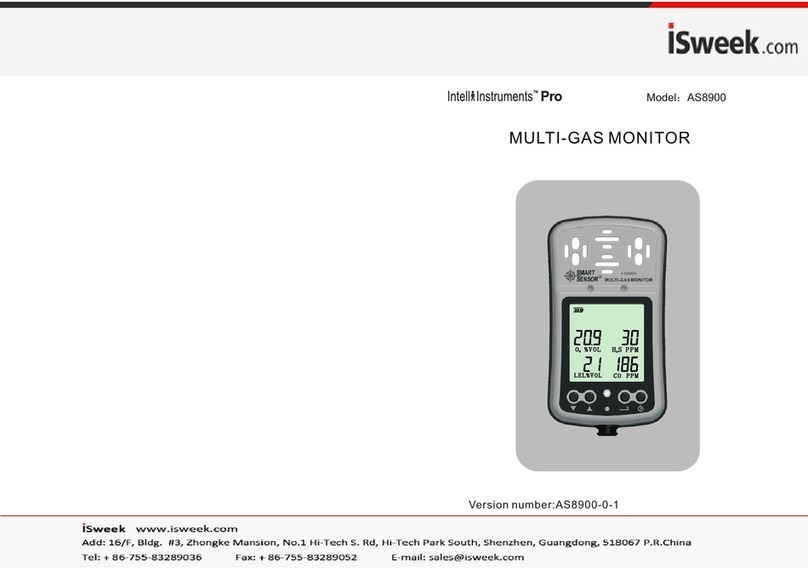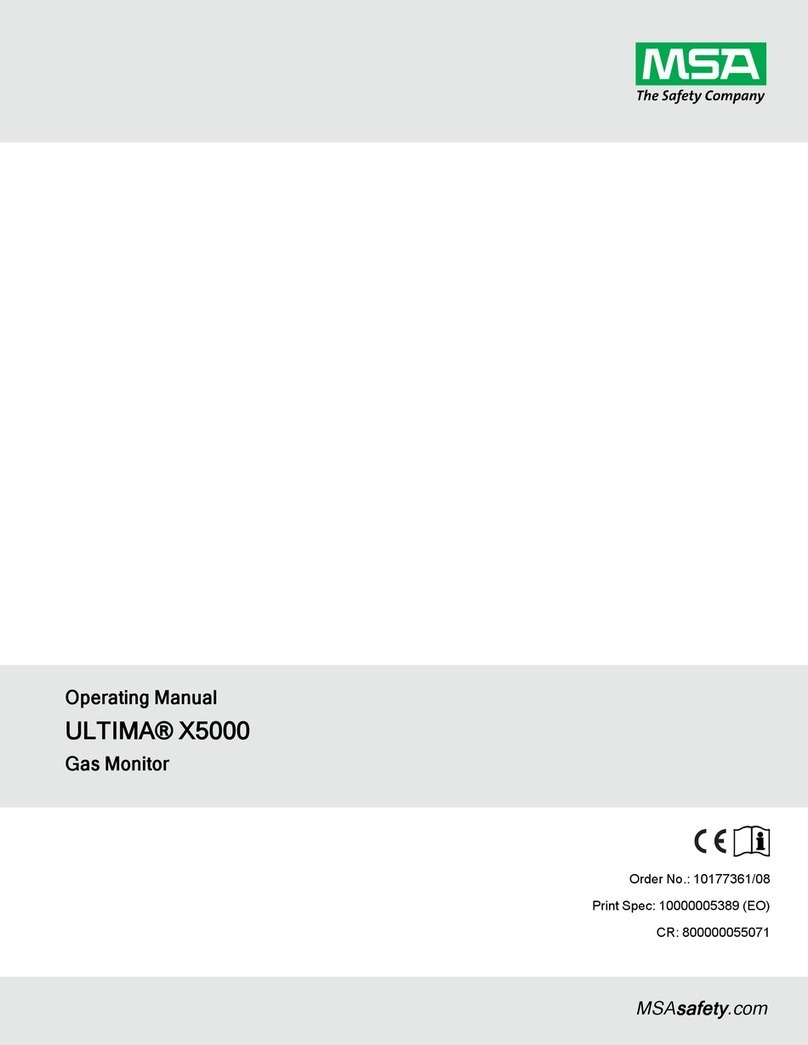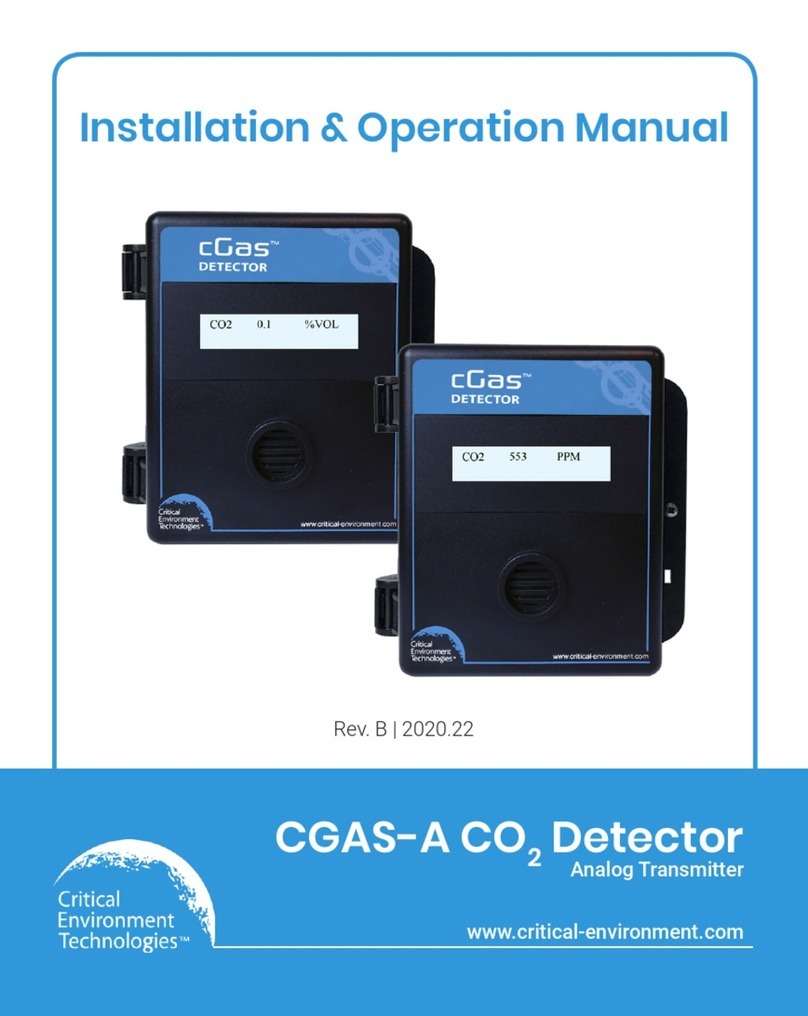
We reserve the right to make changes without notice
The values for concentration and exposure time taken into consideration by the sensor and, consequently, by the de-
tector, have been established allowing a large safety margin in order to ensure the safety of the persons involved.
The response of the sensor is of the “Dynamic” type: if the concentration passes from one band to another, the
time count increases or decreases as a consequence, modifying the response of the detector.
If the concentration of gas should return below 0.005% (50 ppm) for more than one minute, the detector
returns to the “Normal” condition, thereby cancelling all the times counted up to that moment.
Signalling pre-alarm and alarm
When the detector enters “Pre-alarm” (exceeding the pre-established threshold), the red LED of the detector (4.
When the detector enters the “Alarm” state (at the end of the programmed time for exceeding the threshold), the
red LED lights and stays lit, the internal acoustic alarm is switched on and the output relay is switched on.
Switchnig off internal buzzer
When the detector is in the alarm state, press the TEST button – silence for about two seconds: the internal buzzer
is switched off (to remove the annoyance), but the detector remains in the alarm state (alarm LED lit and relay
Sensor fault and signalling this
The detector is able to signal a possible fault in the sensing element: this possibility is indicated by the flashing of
the yellow LED on the facia.
To ensure the continuous operation of the detector it is necessary to check its operation at least once every
three or four months according to the instructions in 11.
At least once a year, a check by a specialist technician is advisable.
) pressed for about 5 seconds until the detector enters the pre-alarm condition
and then that of alarm. Check that
the red LED lights and stays lit indicating presence alarm
the internal acoustic alarm is switched on
the external switch is switched on (relay switched on)
after about 5 seconds the alarm ceases and the detector returns to its normal operating condition
if the detector is connected to a solenoid valve with manual reset, it is necessary to re-open it with the reset le-
Life cycle of sensing element
On the cover of the detector is a plate showing the date of the last servicing.
After this date the life cycle of the sensing element comes to an end and the element must, therefore, be replaced
by a new one. It is necessary to carry out the calibration of the new sensing element and a complete overhaul of
the detector. These operations must be carried out in the manufacturer’s workshop.
Carbon monoxide is produced by the faulty operation of a gas appliance or by a defective flue.
It is absolutely odourless and therefore it is impossible to detect its presence: this makes it extremely
The only means of detecting the presence of carbon monoxide in the air is a gas detector.
For the above reasons, if the detector triggers the alarm, act as follows:
turn off all naked flames
turn off all the gas appliances;
open the windows and the doors to ventilate the rooms.
If the cause of the alarm is found and definitely eliminated, the detector can be re-set and the gas supply turned
COSTER TECNOLOGIE ELETTRONICHE S.p.A.
Sede Legale: 20132 Milano - Via San G.B. De La Salle, 4/a
Via San G.B. De La Salle, 4/a
20132 - Milano Fax +39 022593645
Orders Fax +39 0227221239
Reg. Off. Central & Southern
00146 - Roma Fax +39 065566517
Via Gen. Treboldi, 190/192
25048 - Edolo (BS) Tel. +39 0364773202
ISO 9001:2000
®
THE INTE RNATIONAL CE RTIFICATION NETWOR K
Registration Number: IT - 34674
CSQ - Certificate N. 9115.COEE
Pre-alarm and alarm thresholds for carbon monoxide (CO)























